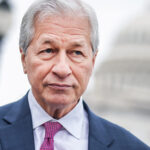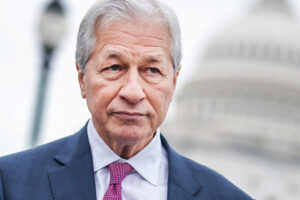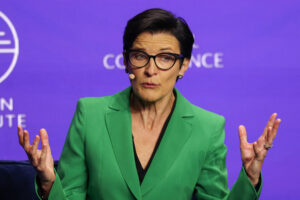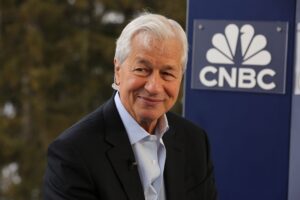
One common solution being milked to address the current baby formula shortage is for mothers to “just breastfeed” their babies, instead.
If only it were that simple.
Supply-chain setbacks and Abbott’s ABT, +1.77% voluntary recall of powdered formulas in February have set up a baby-formula shortage around the U.S. that has become serious enough for President Joe Biden to speak with retailers and infant formula manufacturers on Thursday to receive an update on efforts to make infant formula supply more available to American families. Biden said “There’s nothing more urgent we’re working on than that right now,” on Friday. And Abbott said it can restart production of its baby formulas at a plant in Michigan within two weeks if U.S. regulators allow it to do so.
But some people, including iconic singer and comedian Bette Midler, have suggested that breastfeeding is a free, natural and preferred alternative to formula, anyway. So parents who can’t get their formula should just remember that “breast is best.”
“TRY BREASTFEEDING,” the actress tweeted in call caps on Thursday night, which drew plenty of backlash in the more than 2,500 comments to her post as mothers and doctors explained that: many women cannot produce enough milk; their workplaces don’t give them the time or space to pump breast milk; their babies don’t latch onto their breasts to breastfeed; and dozens of other reasons that 60% percent of mothers do not breastfeed for as long as they intend to, if they can breastfeed at all.
This has led to some lactation experts, scholars and mothers going viral on Twitter TWTR, -9.67% and TikTok as they break down the misconceptions around feeding infants, offering perspective on how families historically fed their babies beyond breastfeeding — and the tragedies that sometimes resulted from relying on homemade alternatives.
The World Health Organization notes that while breastfeeding is one of the most effective ways to ensure a child’s health and survival, nearly two out of three infants across the globe are not exclusively breastfed for the recommended six months. This isn’t new — that rate has not improved in two decades. And the reasons why many women can’t breastfeed or choose not to are complex and nuanced — not to the mention babies separated from their birth mothers. Or the fathers at home with children, who might not have access to breast milk.
“Breastfeeding is not ‘free,’” tweeted researcher and gender bias expert Amy Dahl in one popular Twitter thread. “It’s time-intensive and laborious. It requires access to paid parental leave; protection for employees who nurse to access both a feeding room and time to pump; and breastfeeding education and free lactation consultants.”
“It is terrifying to me how little people understand how humans are created and sustained and kept alive, and how the human body works,” added a mom whose TikTok about breastfeeding misconceptions has gone viral. Be warned there is some obscene language in her video.
Carla Cevasco, an assistant professor in American studies at Rutgers University and an expert in subjects related to food and hunger, has posted a thread on Twitter that’s been shared more than 30,000 times that also looks at the current shortage in context. Her first point: Even before the rise of commercial formula, families often didn’t rely solely on breastfeeding.
“You may be hearing the argument that before the rise of modern commercial infant formula, babies all ate breastmilk [sic] and everything was great,” she wrote. “As a historian of infant feeding, let me tell you why that’s not true.”
Cevasco told MarketWatch that “there’s this inaccurate narrative that everyone breastfed and it was easy, that this was a breastfeeding paradise.”
In fact, Cevasco notes that women often didn’t breastfeed in the past for the same reasons they don’t today. Those reasons could range from the mother having an insufficient supply of milk to the child having trouble latching on.
And that’s not factoring in the many women who died during childbirth in the past — meaning that there was no choice for the family but to find an alternative food source for the infant.
There have been countless examples of such sources, some of which had lethal results. In her thread, Cevasco points to one example — a recipe of boiled walnuts, cornmeal and water that the Wabanaki, a Native American collective of tribes, created for their young.
But that brings Cevasco to another one of her key points: that reliance on such homemade alternatives carried consequences. These pre-commercial “formulas” could be tainted in various ways, such as through simple spoilage, with infant death being the dreaded result.
“There was no guarantee that the child was going to survive,” Cevasco said.
Ultimately, Cevasco said she’s hoping to shed light on the fact that our modern-day commercial formulas, which are often seen as a lesser solution to breastfeeding, should be respected for what they offer.
Or, as Cevasco told MarketWatch, “Parents in the past would have been so grateful to know” that there was a healthy alternative to breast milk.
In the meantime, some desperate parents have discussed making their own formula at home, which pediatricians and professional trade groups — including the American Academy of Pediatricians — have strongly advised against.
“Although recipes for homemade formulas circulating on the internet may seem healthy or less expensive, they are not safe and do not meet your baby’s nutritional needs,” Steven Abrams, a board-certified pediatrician and a professor of pediatrics at the University of Texas at Austin, wrote for a Healthy Children column.
Read more here: Why there’s a baby formula shortage — and why it’s not safe to make your own formula











